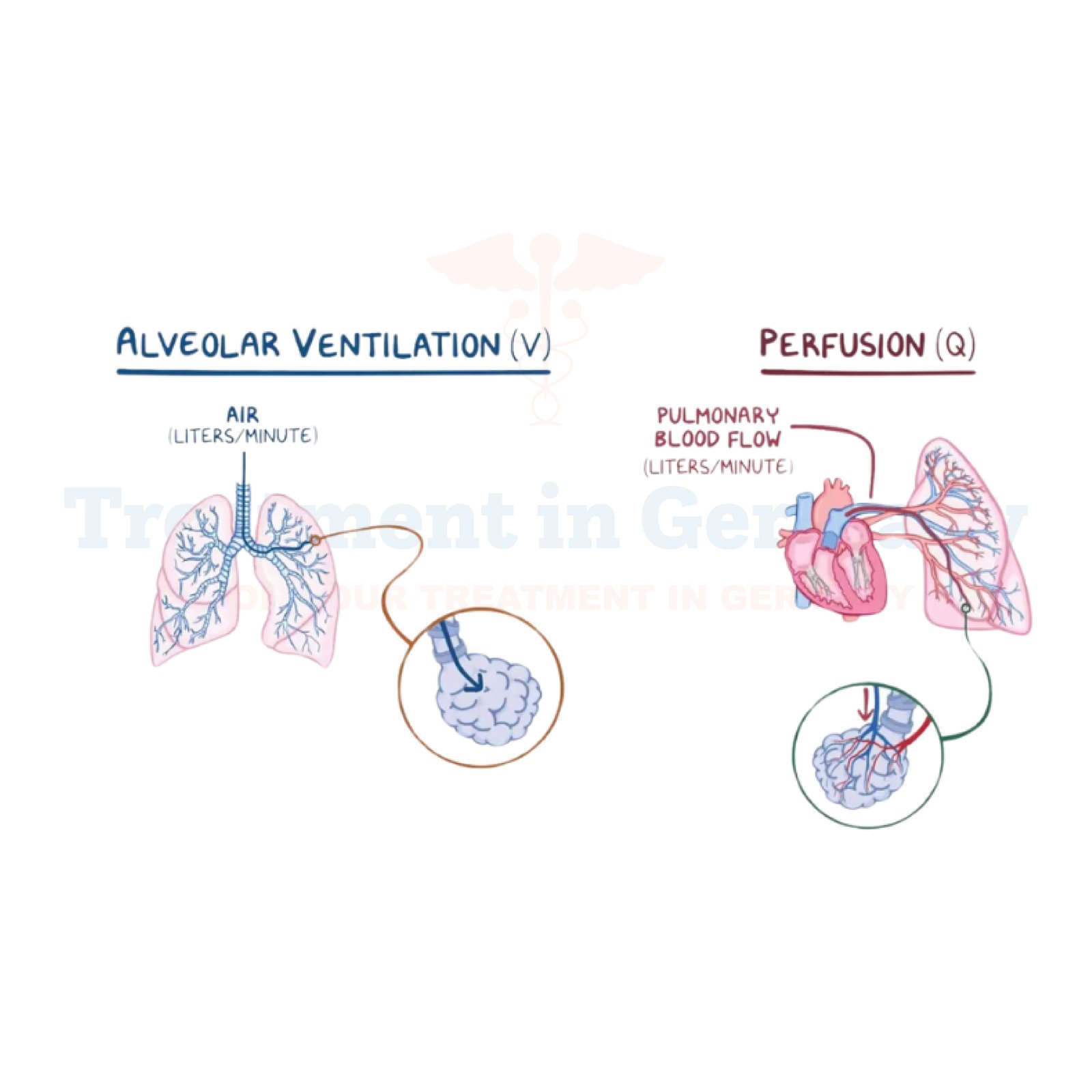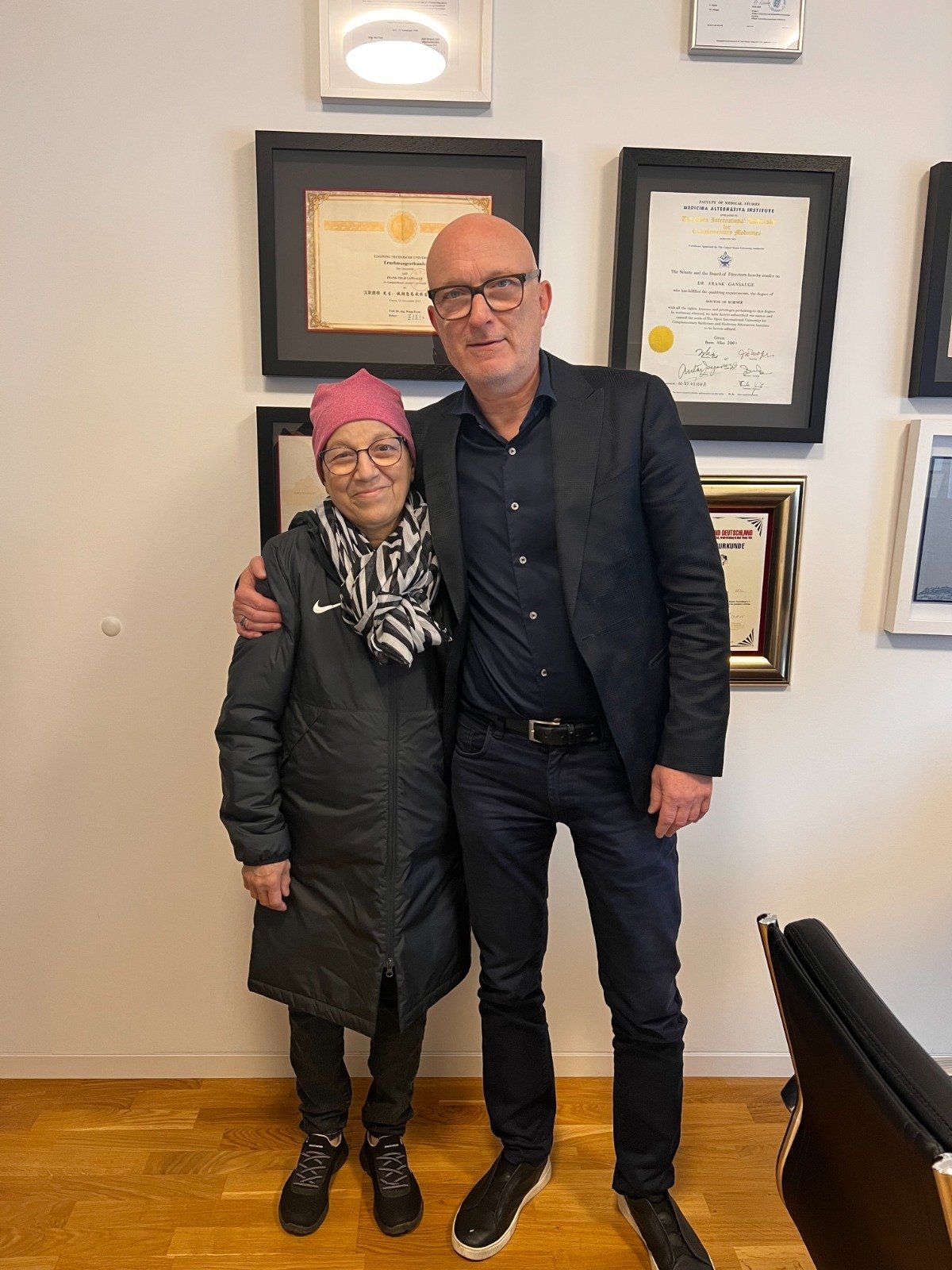The lung ventilation/perfusion (V/Q) scan is an extremely specialized diagnostic test through which lung function is evaluated based on its ventilation (airflow) and perfusion (blood flow). Being one of the leading countries in innovative medical technology, Germany relies on V/Q scans to diagnose such life-threatening pulmonary conditions as PE and CTEPH.
Also evaluates the general health status of a patient before surgeries like lung transplants. Below, you may find a detailed summary of this highly advanced diagnostic procedure, its applications, and the advantages of seeking treatment in Germany.
A lung ventilation/perfusion (V/Q) scan is a non-invasive imaging test intended to evaluate lung functioning by monitoring airflow and blood flow. The "V" stands for ventilation where airflow into the lungs can be quantified, while "Q" symbolizes perfusion; this means blood flow in lung vessels.
The diagnostic scan is helpful in Germany in detecting problems that would otherwise go undiagnosed during other imaging techniques, such as the CT scan, due to allergies or kidney disorders. In Germany, a good alternative exists and allows the practitioner to closely assess lung function when traditional imaging is not ideal.
Diagnosis of Pulmonary Embolism (PE)
The most common reason for undergoing a V/Q scan in Germany is detecting pulmonary embolism or dangerous blockage of blood vessels within the lung. For individuals in Germany who experience certain issues related to complications with CT pulmonary angiography, such as renal problems or allergies to dyes used in contrasts, the V/Q scan can be especially useful for. It identifies mismatches of ventilation and perfusion, thereby demonstrating areas of blocked blood flow.
Chronic Thromboembolic Pulmonary Hypertension (CTEPH)
Chronic thromboembolic pulmonary hypertension (CTEPH) is an uncommon, long-term condition of high blood pressure in the arteries of the lungs, essentially caused by clots that are not resolved.
The V/Q scan in Germany is very effective in detecting CTEPH because it would show several perfusion defects without a matched ventilation defect, which is typical of the condition. The technology is sensitive and specific making it valuable for the detection of CTEPH and proper and timely treatment.
Pre-transplant and pre-surgery assessment for lung transplant
In Germany, a V/Q scan is applied during pre-transplant and pre-surgery evaluation. In Germany, an example of the diseases that require this kind of scan would be those such as COPD who are scheduled to undergo complicated surgeries such as lung volume reduction surgery. In Germany, the patient who has had a lung transplant scan helps doctors determine which parts of the lungs are mostly damaged to ascertain proper surgical planning.
COPD assessment
In a progressive disease in which a patient has difficulty breathing, such as is the case with COPD, there are important things that the V/Q scan for German patients will reveal. It will identify areas in the lung that have decreased air or blood flow to help in options and surgical decisions concerning treatment, such as lung volume reduction surgery, an attempt through surgery to improve lung function through the removal of damaged lung tissue.
Lung Ventilation/Perfusion (V/Q) Scan Procedure in Germany
There are two elements to the V/Q scan procedure: the ventilation scan and the perfusion scan both are performed on the same day in Germany.
Ventilation Scan
In the ventilation component, a radioactive tracer in aerosol form is inhaled through a mask fitted. The radioactive tracer acts like a tracer; therefore it defines the airflow within the lungs. Images of the lungs are acquired using a gamma camera to understand the airflow distribution. Areas highlighted in images may point to a blockage or some form of lung disease.
Perfusion Scan
The perfusion scan is the second part, where a small amount of radioactive tracer is injected into the vein; through a gamma camera, images are captured showing blood flow in the lungs. Doctors at the German center can then analyze these images to determine areas with less blood flow, suggesting a possible existence of blood clots. Both parts of the V/Q scan in Germany do not cause pain, require minimal preparation.
Benefits of V/Q Scan Treatment in Germany
New Diagnostic Medicinal Device in Germany
Germany is at the forefront of medical diagnostic innovation, and the latest imaging technology is used there. SPECT as well as SPECT/CT provides functional imaging combined with structural insights. This will help in an increase in the accuracy of V/Q scans in Germany. This advanced technology will then allow a much more detailed examination of lung health, especially when doing such tests to diagnose complex conditions like PE and CTEPH.
Lower Radiation Exposure
For the vulnerable in Germany radiation-sensitive patients, the V/Q scan would serve as the better alternative. The latter does not expose the patient to as significant radiation emissions as the CT scans do. It minimizes radioactive exposure, a very excellent option for young, pregnant women or women who should undergo repeated examinations.
Mildly Invasive with Minimal Side Effects
It is not an invasive procedure, generally causing minimal side effects on a V/Q scan done in Germany. The danger from any allergic reaction to the tracer radioactive is low, and when side effects do present, they are usually minimal. This scan is crucial for patients with chronic kidney disease in Germany since there are no contrast agents applied, which could risk their renal function.
Effective for the Identification of Abnormal Cells in Germany
In cases of lung disease or after surgery, a V/Q scan in Germany may detect abnormal cells and track changes in the lungs for some time. Unearthing mismatches in airflow and blood flow, it helps diagnose conditions wherein abnormal lung cell growth or tissue blockage may be present, leading to the vital information to plan the proper treatment.
Symptoms that Call for a V/Q Scan
Some of the following are found to need a V/Q scan. They are acute or very severe. Patients suffering from these symptoms should approach their physician about a V/Q scan.
Frequently Asked Questions (FAQs)
When is a V/Q scan permissible?
The use of a V/Q scan is allowed to confirm pulmonary embolism, CTEPH, and COPD and to assess lung function before lung transplant surgery.
What is the relevance of V/Q scan use in Germany in comparison to a CT scan?
The V/Q scan involves the use of radioactive tracers and a gamma camera during the lung function analysis, while a CT scan would present structural imaging using contrast dye. V/Q scans pose less harm to patients having kidney conditions or allergies to contrast dye.
What are some advantages of a V/Q scan in Germany?
Germany offers advanced imaging techniques, such as SPECT/CT, that enhance the precision in diagnosis and provide much-needed functional information regarding the lungs with minimal exposure to radiation.
Do risks exist with the V/Q scan in Germany?
The risks are minimal with the V/Q scan, including mild, transient pain at the injection site and an extremely low risk of an allergic reaction to the tracer. Compared to the imaging of other modalities, it has relatively low exposure to radiation.
What to anticipate after a V/Q scan in Germany?
After performing a V/Q scan in Germany, patients are usually able to return to normal activities right away. Any residual radiation remaining in the body from the tracer will leave the body through natural decay over the next several hours or days.
👉 Contact us for further information and receive a complimentary consultation.

.webp)
.webp)
 (1).webp)
 (1).webp)

.webp)
.webp)
 (1).webp)
 (1).webp)
